Murcia
Copyright: Sergey Didenko/Shutterstock.comMurcia
The ancient city of Murcia is located in the mountains, about 25 km away from the Mediterranean Sea. The region is known for agriculture and tourism but also for its charming mountain villages, traditional fishing stations, a green countryside, and unspoiled beaches.The City
Like many other Spanish cities, the Moors founded Murcia in the 9th century; under their rule the city developed into the region's centre that it still remained until today. The region stretches from Alicante in the north to Cartagena and Lorca in the south, and towards Moratalla in the west. The Moorish influence is hard to spot in the city itself, as many of the older neighbourhoods were established only in the 18th century when the city further expanded. After centuries of industrial growth, Murcia today holds a large university and, by that, a lively buzz of a considerable student population. Murcia still remains relatively undiscovered by tourism, especially compared to other coastal towns nearby. The area is mainly provincial farmland but there are also relatively young towns founded by sun starved foreigners. The villages in the surrounding mountains are well worth a visit, and it is easy to take day trips either by rental car, train or bus. The coastal region of Costa Cálida has many interesting destinations: Lorva’s baroque buildings, the quaint village of Moratalla, the glamorous beach community of La Manga, and the medieval neighbourhoods of Cartagena and Orihuela are only a few of them.Do & See
It is easy to take day trips from Murcia, either by rental car, train or bus. The villages in the surrounding mountains are well worth a visit, and the coastal region of Costa Cálida has many interesting destinations such as Lorva’s baroque buildings and the quaint village of Moratalla. However, do take your time and experience Murcia itself.
Dining
The narrow alleyways of Murcia’s old town are lined with restaurants, and fortunately, they haven’t customised their menus to the tourists' food culture. Instead, they serve genuine Spanish Mediterranean fare with fresh products, smooth olive oil, delicious sausages, and, of course, fish and sea food. The region’s rice dish Paella is famous, as rice is cultivated in the nearby village of Calasparra.
Cafes
Finding a cafe to relax at is not a problem in Murcia but choosing between all those lovely shops indeed is. All of them offer great coffee, delicious desserts and also snacks, so you can enjoy your break during sightseeing for experiencing your own Spanish Siesta.
Bars & Nightlife
For its relatively small size, Murcia has a vibrant bar and club scene. The main reason for its briskly atmosphere is the student population that frequents the neighbourhoods near the university, but the old town has also some fair share of popular hot spots.
Shopping
The narrow alleys of the Old Town, the pedestrian Calle Trapería between the Cathedral and Plaza de Santo Domingo, and luxurious Calle Jabonerias, are some of the city’s main shopping destinations. Calle Traperia is also home to Murcia’s casino, for those who want to try and increase their shopping budget. Nearby, food market Mercado Veronica is worth a visit as the Murcia region is known for its fresh and tasty produce. Bargains can be made at the souvenir and flea market on Jeronimo de Roda behind the El Corte Inglés department store. The older areas of coastal town Cartagena also offer shopping options, as does the luxurious beach town La Manga. The Murcia region has a large number of wineries, many of them ecologically managed. Head for the Ricote Valley to explore some of them.

 Copyright: I, Sebasgs/Wikimedia Commons
Copyright: I, Sebasgs/Wikimedia Commons
 Copyright: rubiphoto/Shutterstock.com
Copyright: rubiphoto/Shutterstock.com
 Copyright: alexilena/Shutterstock.com
Copyright: alexilena/Shutterstock.com
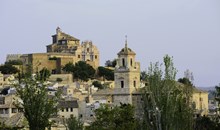 Copyright: Jeronimo Contreras Flores/Shutterstock.com
Copyright: Jeronimo Contreras Flores/Shutterstock.com
 Copyright: Landscape Nature Photo/Shutterstock.com
Copyright: Landscape Nature Photo/Shutterstock.com
 Copyright: holbox/Shutterstock.com
Copyright: holbox/Shutterstock.com
 Copyright: Mistervlad/Shutterstock.com
Copyright: Mistervlad/Shutterstock.com
 Copyright: MOs810/Wikimedia Commons
Copyright: MOs810/Wikimedia Commons
 Copyright: Leonid Andronov/Shutterstock.com
Copyright: Leonid Andronov/Shutterstock.com
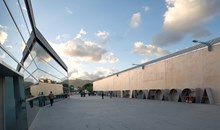 Copyright: Vazquezconsuegra/Wikimedia Commons
Copyright: Vazquezconsuegra/Wikimedia Commons
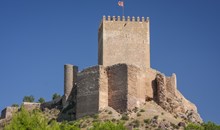 Copyright: Lev Levin/Shutterstock.com
Copyright: Lev Levin/Shutterstock.com
 Copyright: tsyklon/Shutterstock.com
Copyright: tsyklon/Shutterstock.com
 Copyright: G Allen Penton/Shutterstock.com
Copyright: G Allen Penton/Shutterstock.com
 Copyright: Iakov Filimonov/Shutterstock.com
Copyright: Iakov Filimonov/Shutterstock.com
 Copyright: TTstudio/Shutterstock.com
Copyright: TTstudio/Shutterstock.com
 Copyright: Brian Maudsley/Shutterstock.com
Copyright: Brian Maudsley/Shutterstock.com
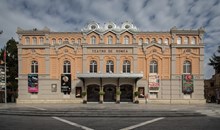 Copyright: Pedro J Pacheco/Wikimedia.org
Copyright: Pedro J Pacheco/Wikimedia.org
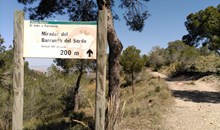 Copyright: Juan Antonio Pellicer Alcaraz/Wikimedia.org
Copyright: Juan Antonio Pellicer Alcaraz/Wikimedia.org
 Copyright: Iakov Filimonov/Shutterstock.com
Copyright: Iakov Filimonov/Shutterstock.com
 Copyright: Syda Productions/Shutterstock.com
Copyright: Syda Productions/Shutterstock.com
 Copyright: Rachel Ruysch/Wiki Commons
Copyright: Rachel Ruysch/Wiki Commons
 Copyright: Andrey Bayda/Shutterstock.com
Copyright: Andrey Bayda/Shutterstock.com
 Copyright: Shebeko/Shutterstock.com
Copyright: Shebeko/Shutterstock.com
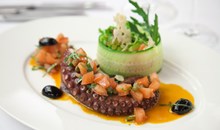 Copyright: avs/Shutterstock.com
Copyright: avs/Shutterstock.com
 Copyright: BlueOrange Studio/Shutterstock.com
Copyright: BlueOrange Studio/Shutterstock.com
 Copyright: 06photo/Shutterstock.com
Copyright: 06photo/Shutterstock.com
 Copyright: eugena-klykova/Shutterstock.com
Copyright: eugena-klykova/Shutterstock.com
 Copyright: Alena Haurylik/Shutterstock.com
Copyright: Alena Haurylik/Shutterstock.com
 Copyright: Takin' Shotz/Shutterstock.com
Copyright: Takin' Shotz/Shutterstock.com
 Copyright: funkyfrogstock/Shutterstock.com
Copyright: funkyfrogstock/Shutterstock.com
 Copyright: nuu_jeed/Shutterstock.com
Copyright: nuu_jeed/Shutterstock.com
 Copyright: Cemirken/Shutterstock.com
Copyright: Cemirken/Shutterstock.com
 Copyright: Filk/Shutterstock.com
Copyright: Filk/Shutterstock.com
 Copyright: Alexander Inglessi/Shutterstock.com
Copyright: Alexander Inglessi/Shutterstock.com
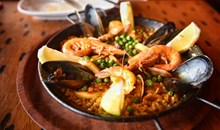 Copyright: Timothy Christianto/Shutterstock.com
Copyright: Timothy Christianto/Shutterstock.com
 Copyright: ampersandphoto/Shutterstock.com
Copyright: ampersandphoto/Shutterstock.com
 Copyright: Rawpixel.com/Shutterstock.com
Copyright: Rawpixel.com/Shutterstock.com
 Copyright: nito/Shutterstock.com
Copyright: nito/Shutterstock.com
 Copyright: StudioByTheSea/Shutterstock.com
Copyright: StudioByTheSea/Shutterstock.com
 Copyright: Aleksandrs Muiznieks/Shutterstock.com
Copyright: Aleksandrs Muiznieks/Shutterstock.com
 Copyright: bbernard/Shutterstock.com
Copyright: bbernard/Shutterstock.com
 Copyright: William Perugini/Shutterstock.com
Copyright: William Perugini/Shutterstock.com
 Copyright: Undrey/Shutterstock.com
Copyright: Undrey/Shutterstock.com
 Copyright: Creative Lab/Shutterstock.com
Copyright: Creative Lab/Shutterstock.com
 Copyright: Creative Lab
Copyright: Creative Lab
 Copyright: VGstockstudio/Shutterstock.com
Copyright: VGstockstudio/Shutterstock.com
 Copyright: Stokkete/Shutterstock.com
Copyright: Stokkete/Shutterstock.com
 Copyright: TukTuk Design/Shutterstock.com
Copyright: TukTuk Design/Shutterstock.com
 Copyright: VectorA/Shutterstock.com
Copyright: VectorA/Shutterstock.com
 Copyright: Juan Garces
Copyright: Juan Garces
 Copyright: Pierre-Luc Auclair
Copyright: Pierre-Luc Auclair
 Copyright: ArrivalGuides
Copyright: ArrivalGuides
 Copyright: Andy Fuchs
Copyright: Andy Fuchs
 Copyright: Gemma Garner
Copyright: Gemma Garner
 Copyright: Jardson Almeida
Copyright: Jardson Almeida
 Copyright: Stirling Tschan
Copyright: Stirling Tschan